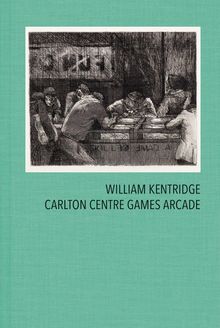ARTIST MONOGRAPHS
|
|
STATUS: Forthcoming | 6/24/2025 This title is not yet published in the U.S. To pre-order or receive notice when the book is available, please email orders @ artbook.com |
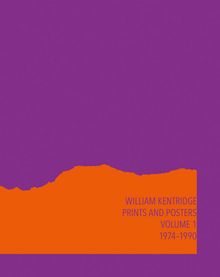 William Kentridge: Catalogue Raisonné Volume 1
William Kentridge: Catalogue Raisonné Volume 1
Prints and Posters 1974–1990
Published by Steidl.
Edited with text by Warren Siebrits.
William Kentridge (born 1955) has been creating poignant, clever and visually arresting works across a variety of mediums for more than five decades. This book focuses on his long-standing relationships with printmaking and poster design. Over the past three years, South African scholar Warren Siebrits began compiling a five-volume catalogue raisonné of Kentridge’s prints and posters. In this first volume, focusing on graphics produced between 1974 and 1990, Siebrits presents the artist’s earliest forays into linocut, etching and monotype printing, to name but a few. While for many artists printmaking is informed by their work in what have historically been considered more valuable mediums such as painting and drawing, Siebrits emphasizes that Kentridge’s process has been quite the opposite. This intensive look at Kentridge first and foremost as a printmaker is thus crucial for a comprehensive understanding of his diverse and influential oeuvre. The chronology of the prints and posters helps reestablish many lost and obscure tributaries that will prove invaluable for following Kentridge’s trajectory.
PUBLISHER
Steidl
BOOK FORMAT
Slip, clth, 9.5 x 12 in. / 688 pgs / 781 color.
PUBLISHING STATUS
Pub Date 3/14/2023
Active
DISTRIBUTION
D.A.P. Exclusive
Catalog: SPRING 2023 p. 102
PRODUCT DETAILS
ISBN 9783969991435 SDNR40
List Price: $295.00 CAD $413.00
AVAILABILITY
In stock
in stock $295.00 Free Shipping UPS GROUND IN THE CONTINENTAL U.S. |
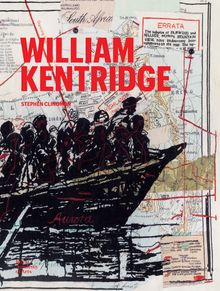 William Kentridge
William Kentridge
Published by Royal Academy of Arts.
Text by Stephen Clingman, Adrian Locke, Rose Thompson.
The South African artist William Kentridge is internationally renowned for the expressionism of his work in numerous mediums, among them charcoal, printmaking, sculpture and film, as well as his acclaimed theatrical and operatic productions. As elusive as it is allusive, Kentridge’s art is shaped by apartheid and grounded in the politics of the post-apartheid era, and in science, literature and history, while always maintaining space for contradiction and uncertainty.
This volume presents early drawings and etchings from Ubu Tells the Truth; stills from Johannesburg, 2nd Greatest City after Paris and other films; six tapestry works; various drawing series, including Kentridge’s drawings of trees on various supports; a model theater; and more. These are punctuated by six meditations on the exhibition’s themes by Stephen Clingman: Drawn through Time; The Enigmas of Soho; Shadows of the Past, Shadows of the Present; Dualities, or How I Did Not Become; Timespaces, or Two Dancers; and Coda: Vanishings. Along the way, thought-collages, allusions and assemblages come together to create a connective, dimensional way of thinking inspired by Kentridge’s own habits of creation.
PUBLISHER
Royal Academy of Arts
BOOK FORMAT
Hardcover, 8.75 x 11.75 in. / 224 pgs / 223 color / 25 bw.
PUBLISHING STATUS
Pub Date 11/22/2022
Active
DISTRIBUTION
D.A.P. Exclusive
Catalog: FALL 2022 p. 68
PRODUCT DETAILS
ISBN 9781912520732 TRADE
List Price: $45.00 CAD $63.00
AVAILABILITY
In stock
in stock $45.00 Free Shipping UPS GROUND IN THE CONTINENTAL U.S. |
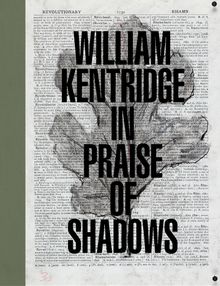 William Kentridge: In Praise of Shadows
William Kentridge: In Praise of Shadows
Published by DelMonico Books/The Broad.
Edited with text by Ed Schad. Foreword by Joanne Heyler. Contributions by William Kentridge, Ann McCoy, Zakes Mda, Walter Murch.
This far-reaching book presents Kentridge’s dynamic art practice, which originates in charcoal drawing and expands into intersections with film, sculpture, opera and theater performances, printmaking and many other mediums. The volume is organized chronologically and thematically, emphasizing Kentridge’s destabilizing of South African and global narratives through openness to uncertainty, the generative power of the artist’s studio and perpetual change, all as conditions for illuminating repressed and silenced voices in historical records.
An essay by curator Ed Schad is presented along with studio photography, archival material and illuminating illustrations of Kentridge’s work, joining essays by globally recognized literary figures and thinkers Zakes Mda and Ann McCoy. Notably, the volume features a conversation between Kentridge and the famous film and sound editor Walter Murch, as well as a never-before-published lecture by the artist.
The work of William Kentridge (born 1955) has been seen in museums and galleries around the world since the 1990s, including the Museum of Modern Art in New York, the Albertina Museum in Vienna, Musée du Louvre in Paris, Whitechapel Gallery in London, Louisiana Museum in Copenhagen, the Reina Sofia museum in Madrid, the Kunstmuseum in Basel and Zeitz MOCAA and the Norval Foundation in Cape Town. Opera productions include Mozart’s The Magic Flute, Shostakovich’s The Nose and Alban Berg’s operas Lulu and Wozzeck. In 2016 Kentridge founded the Centre for Less Good Idea in Johannesburg, a space for responsive thinking and making through experimental, collaborative and cross-disciplinary art practices. The center hosts an ongoing program of workshops, public performances and mentorship activities.
PUBLISHER
DelMonico Books/The Broad
BOOK FORMAT
Hardcover, 8.25 x 10.5 in. / 288 pgs / 250 color / 50 bw.
PUBLISHING STATUS
Pub Date 12/20/2022
Active
DISTRIBUTION
D.A.P. Exclusive
Catalog: FALL 2022 p. 69
PRODUCT DETAILS
ISBN 9781636810669 TRADE
List Price: $65.00 CAD $89.00 GBP £55.00
AVAILABILITY
In stock
in stock $65.00 Free Shipping UPS GROUND IN THE CONTINENTAL U.S. |
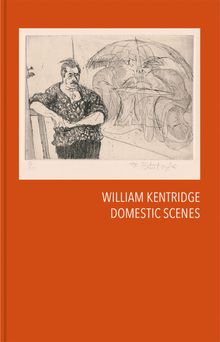 William Kentridge: Domestic Scenes
William Kentridge: Domestic Scenes
Published by Steidl.
Text by William Kentridge, Warren Siebrits.
This book documents, for the first time, the entire 54 images—as well as an additional 65 plate progressions not previously known to exist—in William Kentridge’s important early series of etchings and aquatints, Domestic Scenes (1980). One of today’s most respected contemporary artists, Kentridge (born 1955) was only 25 years old and relatively unknown when he made these images, which are pivotal in how they shaped his thinking, studio practice and conceptual approach. Presenting a range of human interactions in domestic environments and revealing influences from Matisse to Francis Bacon, from Giacomo Balla to Niki de Saint Phalle, the prints receive in this book fascinating new commentary from Kentridge, who shares his working methods as well as personal memories of the prints’ subjects and creation.
Framed by detailed research by Warren Siebrits, the compiler of Kentridge’s upcoming catalogue raisonné of prints and posters, Domestic Scenes provides some of the earliest evidence of the artist “stalking the drawing”: returning to the etching plate time and again to make additions and alterations. The book features a tipped-in image and a pull-out poster.
PUBLISHER
Steidl
BOOK FORMAT
Clth, 7 x 10.5 in. / 160 pgs / 140 color / 5 bw.
PUBLISHING STATUS
Pub Date 3/15/2022
Active
DISTRIBUTION
D.A.P. Exclusive
Catalog: SPRING 2022 p. 60
PRODUCT DETAILS
ISBN 9783969990421 TRADE
List Price: $58.00 CAD $80.00
AVAILABILITY
Out of stock
STATUS: Out of stock Temporarily out of stock pending additional inventory. |
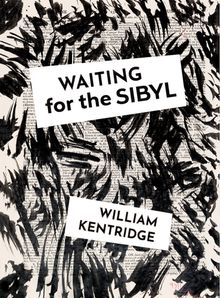 William Kentridge: Waiting for the Sibyl
William Kentridge: Waiting for the Sibyl
Published by Walther König, Köln.
Edited by Anne McIlleron. Text by William Kentridge.
This volume publishes the libretto of William Kentridge’s (born 1955) chamber opera Waiting for the Sibyl, which was made for the Teatro dell’Opera di Roma and first performed there in September 2019. Music for the opera was composed by Nhlanhla Mahlangu and Kyle Shepherd. The images and phrases were projected on variously sized screens in the opera, sometimes in sync with the sung text, sometimes independent of any sung text. In the opera production, the right-hand page generally featured text, and the left-hand page a mixture of drawings and the shadow of a dancer cast onto its surface.
William Kentridge: Waiting for the Sibyl includes more and different drawings than are used in the opera. This book is compiled and published in the time of the COVID-19 pandemic, i.e. during a time in which it is not possible to perform the opera live. It is therefore undertaken in anticipation of the time when the opera can be seen in its full form.
PUBLISHER
Walther König, Köln
BOOK FORMAT
Hardcover, 7.75 x 10.5 in. / 360 pgs / 352 color.
PUBLISHING STATUS
Pub Date 3/30/2021
Out of stock indefinitely
DISTRIBUTION
D.A.P. Exclusive
Catalog: SPRING 2021 p. 111
PRODUCT DETAILS
ISBN 9783960988656 FLAT40
List Price: $89.95 CAD $125.93
AVAILABILITY
Not available
STATUS: Out of stock indefinitely. |
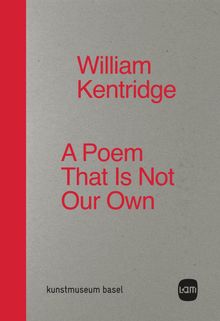 William Kentridge: A Poem That Is Not Our Own
William Kentridge: A Poem That Is Not Our Own
Published by Walther König, Köln.
Edited with text by Sébastien Delot, Josef Helfenstein. Text by Eva Falge, Ute Holl, William Kentridge, Leora Maltz-Leca.
In more than three decades, William Kentridge (born 1955) has produced an oeuvre spanning diverse mediums including animated film, drawings, prints and rare books, stage production and sculpture. A Poem That Is Not Our Own establishes a link between his early drawings and films from the 1980s and 1990s and his most recent work, bringing into focus the thematic complex of migration, flight, and processions in his oeuvre. It illustrates how these themes first emerge in Kentridge's early graphic work and grow more prominent over the years as he explores their potential in ever more opulent creations.
Included here are the first presentations of The Head & The Load, which premiered at the Tate Modern, London, in the summer of 2018. An extravagant production involving film projections, shadow play and an ensemble of performers, the sprawling procession, which defied conventional genre boundaries, shed light on a neglected chapter of history: Africa's role in World War I.
PUBLISHER
Walther König, Köln
BOOK FORMAT
Hardcover, 6.5 x 9.5 in. / 248 pgs / 89 color.
PUBLISHING STATUS
Pub Date 10/8/2019
Active
DISTRIBUTION
D.A.P. Exclusive
Catalog: SPRING 2020
PRODUCT DETAILS
ISBN 9783960986256 FLAT40
List Price: $55.00 CAD $75.00
AVAILABILITY
Out of stock
STATUS: Out of stock Temporarily out of stock pending additional inventory. |
 William Kentridge: Thick Time
William Kentridge: Thick Time
Published by Whitechapel Gallery.
Edited with text by Iwona Blazwick. Text by Homi Bhabha, Sabine Breitwieser, Michael Juul Holm, Joseph Koerner, Denise Wendel.
The fully illustrated monograph includes new critical writings on each of the works presented by venue curators Iwona Blazwick and Sabine Breitwieser; Michael Juul Holm, head of publications at Louisiana Museum of Modern Art; Harvard art historian Joseph Koerner; Denise Wendel, a writer interested in the relationship between art, theater and music; and influential Harvard postcolonial studies academic Homi Bhabha. The volume also features a selected exhibition history and bibliography.
William Kentridge was born in 1955 in Johannesburg, South Africa, where he continues to live and work. He is the recipient of several awards, including the Carnegie, and is represented by the Marian Goodman Gallery in New York. A major retrospective co-organized by the Hirshhorn Museum and Sculpture Garden; the New Museum of Contemporary Art, New York; and the Museum of Contemporary Art, Chicago recently toured the U.S. and appeared in Capetown, South Africa. In 2005 his production of The Magic Flute opened at La Monnaie opera house in Brussels, Belgium.
Homi Bhabha is a central figure in cultural studies and has been invited to to deliver lectures around the world at important institutions, including The University of London, England, whilst holding a more permanent position at the University of Chicago and Harvard University since 1997.
PUBLISHER
Whitechapel Gallery
BOOK FORMAT
Paperback, 9.75 x 11.25 in. / 256 pgs / 200 color.
PUBLISHING STATUS
Pub Date 11/22/2016
Out of stock indefinitely
DISTRIBUTION
D.A.P. Exclusive
Catalog: FALL 2016 p. 85
PRODUCT DETAILS
ISBN 9780854882502 TRADE
List Price: $35.00 CAD $47.50
AVAILABILITY
Not available
STATUS: Out of stock indefinitely. |
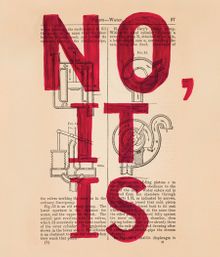 William Kentridge: No, It Is
William Kentridge: No, It Is
Published by Fourthwall Books.
PUBLISHER
Fourthwall Books
BOOK FORMAT
Hardcover, 6 x 7 in. / 560 pgs / 560 color / Ed of 800 copies.
PUBLISHING STATUS
Pub Date 8/31/2013
Out of print
DISTRIBUTION
D.A.P. Exclusive
Catalog: FALL 2013 p. 122
PRODUCT DETAILS
ISBN 9780987042903 TRADE
List Price: $65.00 CAD $75.00
AVAILABILITY
Not available
STATUS: Out of print | 00/00/00 For assistance locating a copy, please see our list of recommended out of print specialists |
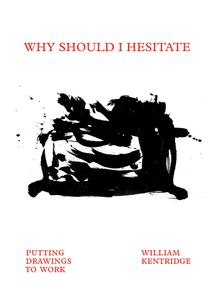 William Kentridge: Why Should I Hesitate
William Kentridge: Why Should I Hesitate
Putting Drawings to Work
Published by Walther König, Köln.
Text by David Freedberg, Karel Nel.
Covering 40 years of South African artist William Kentridge's (born 1955) internationally acclaimed production in drawing, stop-frame animation, video, prints, sculpture, tapestry and large-scale installation, Why Should I Hesitate stands as a definitive statement on his vast oeuvre. This deluxe production, published in an edition of 1,800 copies, is comprised of two slipcased volumes with a unique print in lapis lazuli, each copy stamped and numbered.
The title references Kentridge’s primary practice of drawing and how this core activity informs and enables his studio practice. It also references the impact of individual action on history and the reverse—how history shapes the contemporary and the future—and serves as a commentary on various shifting hegemonies of power politics, economies, language and the authority to narrate history.
PUBLISHER
Walther König, Köln
BOOK FORMAT
Slip, clth, 2 vols, 8 x 10.5 in. / 440 pgs / 350 color.
PUBLISHING STATUS
Pub Date 12/15/2020
Active
DISTRIBUTION
D.A.P. Exclusive
Catalog: SPRING 2020 p. 139
PRODUCT DETAILS
ISBN 9783960987147 SDNR30
List Price: $250.00 CAD $350.00
AVAILABILITY
In stock
in stock $250.00 Free Shipping UPS GROUND IN THE CONTINENTAL U.S. |
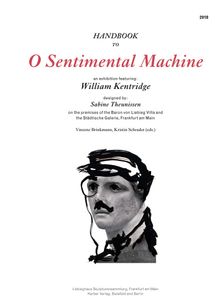 William Kentridge: O Sentimental Machine
William Kentridge: O Sentimental Machine
Published by Kerber.
Edited with text by Vinzenz Brinkmann, Kristin Schrader. Text by Michaela Ott, Oliver Primavesi.
In this book, the works of William Kentridge (born 1955) enter into dialogue with the grand narratives of civilization, based on the sculpture collection of Frankfurt's Liebieghaus, which spans 5,000 years, forming a quasi-fictitious guide to the collection.
PUBLISHER
Kerber
BOOK FORMAT
Paperback, 6 x 8.5 in. / 288 pgs / 147 color / 128 bw.
PUBLISHING STATUS
Pub Date 8/28/2018
Active
DISTRIBUTION
D.A.P. Exclusive
Catalog: FALL 2018 p. 158
PRODUCT DETAILS
ISBN 9783735604491 TRADE
List Price: $65.00 CAD $87.00
AVAILABILITY
Out of stock
STATUS: Out of stock Temporarily out of stock pending additional inventory. |
 William Kentridge: Triumphs and Laments
William Kentridge: Triumphs and Laments
Published by Walther König, Köln.
Edited with an introduction by Carlos Basualdo. Foreword by Federica Galloni. Text by Gabriele Guercio, Salvatore Settis.
Triumphs and Laments celebrates William Kentridge’s (born 1955) monumental frieze, drawn along the banks of the Tiber River in Rome, as well as the performance which inaugurated it. This reprint of Kentridge’s artist’s book serves as an illustrated guide to one of his most memorable and ambitious projects. Designed with the early Baedekers in mind, it acts as an essential component to viewing Kentridge’s erased-graffiti figures and to understanding the process of their creation. Gatefolds, a poster and a leporello of the frieze are included. The texts, which include a conversation between the artist and Carlos Basualdo, as well as two essays by Salvatore Settis and Gabriele Guercio, explore the meaning of the work and its resonance with the millennia-long history of Rome.
PUBLISHER
Walther König, Köln
BOOK FORMAT
Hardcover, 5.75 x 8 in. / 300 pgs / 144 color / 48 bw.
PUBLISHING STATUS
Pub Date 6/19/2018
Active
DISTRIBUTION
D.A.P. Exclusive
Catalog: SPRING 2018 p. 122
PRODUCT DETAILS
ISBN 9783960981817 FLAT40
List Price: $50.00 CAD $67.50
AVAILABILITY
Out of stock
STATUS: Out of stock Temporarily out of stock pending additional inventory. |
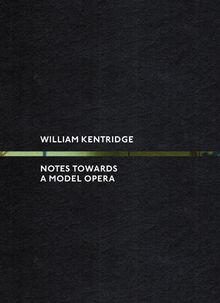 William Kentridge: Notes Towards a Model Opera
William Kentridge: Notes Towards a Model Opera
Published by UCCA/Koenig Books/Marta and Cosentino.
PUBLISHER
UCCA/Koenig Books/Marta and Cosentino
BOOK FORMAT
Hardcover, 6.5 x 9 in. / 264 pgs / illustrated throughout.
PUBLISHING STATUS
Pub Date 3/28/2017
Active
DISTRIBUTION
D.A.P. Exclusive
Catalog: FALL 2015 p. 126
PRODUCT DETAILS
ISBN 9780996215602 TRADE
List Price: $30.00 CAD $40.00
AVAILABILITY
In stock
in stock $30.00 Free Shipping UPS GROUND IN THE CONTINENTAL U.S. |
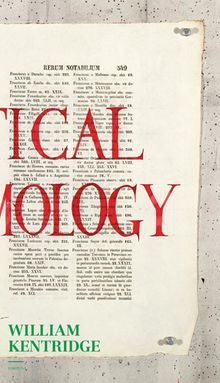 William Kentridge: Fortune
William Kentridge: Fortune
Published by RM/MUAC.
Text by Amanda de la Garza, Néstor García Canclini, Lilian Tone.
PUBLISHER
RM/MUAC
BOOK FORMAT
Paperback, 6.5 x 8.75 in. / 120 pgs / 61 color.
PUBLISHING STATUS
Pub Date 2/23/2016
Out of stock indefinitely
DISTRIBUTION
D.A.P. Exclusive
Catalog: SPRING 2016 p. 186
PRODUCT DETAILS
ISBN 9788416282166 FLAT40
List Price: $19.95 CAD $27.95
AVAILABILITY
Not available
STATUS: Out of stock indefinitely. |
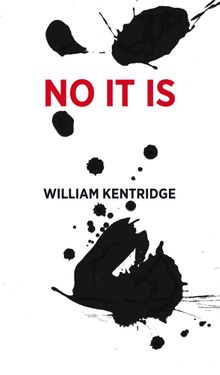 William Kentridge: No It Is
William Kentridge: No It Is
Published by Walther König, Köln.
The exhibition includes early drawings, animated films, installations, large-scale projections such as More Sweetly Play the Dance and theatrical pieces ranging from Winterreise, an evening of Schubert lieder, collaborations with the Handspring Puppet Company and chamber opera. In the performance series, titled Drawing Lessons, Kentridge discusses his working methods and his political context, from the Apartheid era to the present.
PUBLISHER
Walther König, Köln
BOOK FORMAT
Hardcover, 6 x 10 in. / 250 pgs / 180 color.
PUBLISHING STATUS
Pub Date 9/27/2016
Active
DISTRIBUTION
D.A.P. Exclusive
Catalog: SPRING 2016 p. 93
PRODUCT DETAILS
ISBN 9783863359508 FLAT40
List Price: $29.95 CAD $39.95
AVAILABILITY
Out of stock
STATUS: Out of stock Temporarily out of stock pending additional inventory. |
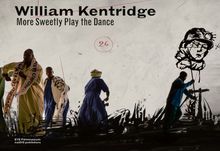 William Kentridge
William Kentridge
Published by nai010 publishers.
Text by Jaap Guldemond, William Kentridge.
PUBLISHER
nai010 publishers
BOOK FORMAT
Paperback, 6 x 9 in. / 112 pgs / 100 color.
PUBLISHING STATUS
Pub Date 11/22/2016
Out of stock indefinitely
DISTRIBUTION
D.A.P. Exclusive
Catalog: FALL 2015 p. 126
PRODUCT DETAILS
ISBN 9789462082137 TRADE
List Price: $35.00 CAD $47.50
AVAILABILITY
Not available
STATUS: Out of stock indefinitely. |
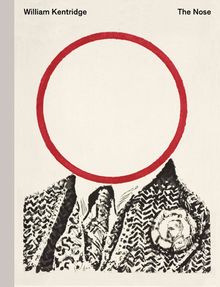 William Kentridge: The Nose
William Kentridge: The Nose
Published by Walther König, Köln.
Edited with foreword and introduction by Sabine Schaschl. Text by William Kentridge, Jane Taylor.
PUBLISHER
Walther König, Köln
BOOK FORMAT
Clth, 9 x 11 in. / 240 pgs / 500 color.
PUBLISHING STATUS
Pub Date 9/29/2015
Out of print
DISTRIBUTION
D.A.P. Exclusive
Catalog: SPRING 2016 p. 186
PRODUCT DETAILS
ISBN 9783863357719 FLAT40
List Price: $50.00 CAD $60.00
AVAILABILITY
Not available
STATUS: Out of print | 00/00/00 For assistance locating a copy, please see our list of recommended out of print specialists |
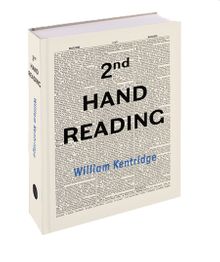 William Kentridge: Secondhand Reading
William Kentridge: Secondhand Reading
Published by Fourthwall Books.
PUBLISHER
Fourthwall Books
BOOK FORMAT
Clth, 8 x 11 in. / 800 pgs / 800 color.
PUBLISHING STATUS
Pub Date 10/31/2014
Out of stock indefinitely
DISTRIBUTION
D.A.P. Exclusive
Catalog: FALL 2014 p. 125
PRODUCT DETAILS
ISBN 9780992226312 TRADE
List Price: $85.00 CAD $112.50
AVAILABILITY
Not available
STATUS: Out of stock indefinitely. |
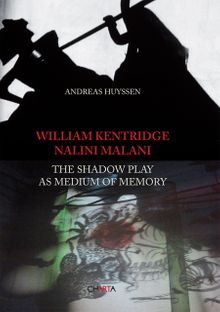 William Kentridge & Nalini Malani: The Shadow Play as Medium of Memory
William Kentridge & Nalini Malani: The Shadow Play as Medium of Memory
Published by Charta.
Text by Andreas Huyssen.
PUBLISHER
Charta
BOOK FORMAT
Hardcover, 6.75 x 9.5 in. / 80 pgs / 32 color.
PUBLISHING STATUS
Pub Date 9/10/2013
No longer our product
DISTRIBUTION
D.A.P. Exclusive
Catalog: SPRING 2014 p. 120
PRODUCT DETAILS
ISBN 9788881588756 TRADE
List Price: $29.95 CAD $35.00
AVAILABILITY
Not available
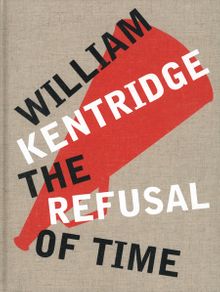 William Kentridge: The Refusal of Time
William Kentridge: The Refusal of Time
Published by Editions Xavier Barral.
Introduction by William Kentridge. Text by Peter Galison, William Kentridge, Catherine Meyburgh, Philip Miller.
PUBLISHER
Editions Xavier Barral
BOOK FORMAT
Clth, 9 x 12.25 in. / 400 pgs / 25 color / 300 bw.
PUBLISHING STATUS
Pub Date 2/28/2013
Active
DISTRIBUTION
D.A.P. Exclusive
Catalog: SPRING 2013 p. 27
PRODUCT DETAILS
ISBN 9782365110075 TRADE
List Price: $125.00 CAD $170.00
AVAILABILITY
Out of stock
STATUS: Out of stock Temporarily out of stock pending additional inventory. |
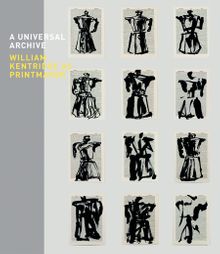 A Universal Archive: William Kentridge as Printmaker
A Universal Archive: William Kentridge as Printmaker
Published by Hayward Gallery Publishing.
Foreword by Roger Malbert. Text by Rosalind Krauss. Interview by Kate McCrickard.
PUBLISHER
Hayward Gallery Publishing
BOOK FORMAT
Paperback, 8.25 x 9.75 in. / 144 pgs / 100 bw.
PUBLISHING STATUS
Pub Date 3/31/2013
Out of stock indefinitely
DISTRIBUTION
D.A.P. Exclusive
Catalog: SPRING 2013 p. 27
PRODUCT DETAILS
ISBN 9781853323010 TRADE
List Price: $30.00 CAD $40.00
AVAILABILITY
Not available
STATUS: Out of stock indefinitely. |
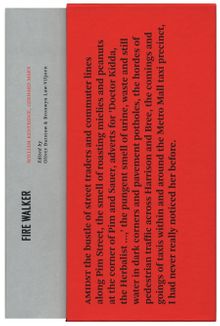 William Kentridge & Gerhard Marx: Fire Walker
William Kentridge & Gerhard Marx: Fire Walker
Published by Fourthwall Books.
Edited by Oliver Barstow, Bronwyn Law-Viljoen. Introduction by Bronwyn Law-Viljoen. Text by Alexandra Dodd, Mpho Matsipa, Zen Marie, Jonathan Cane, Mark Gevisser. Interviews by Oliver Barstow. Photographs by John Hodgkiss, Ben Law-Viljoen, Alistair McLachlan.
PUBLISHER
Fourthwall Books
BOOK FORMAT
Slip Paperback, 7.75 x 11.75 in. / 123 pgs / 123 color.
PUBLISHING STATUS
Pub Date 3/31/2012
Out of print
DISTRIBUTION
D.A.P. Exclusive
Catalog: SPRING 2012 p. 95
PRODUCT DETAILS
ISBN 9780986985027 TRADE
List Price: $50.00 CAD $67.50
AVAILABILITY
Not available
STATUS: Out of print | 00/00/00 For assistance locating a copy, please see our list of recommended out of print specialists |
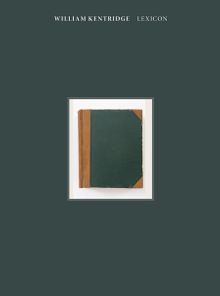 William Kentridge: Lexicon
William Kentridge: Lexicon
Published by A.S.A.P..
PUBLISHER
BOOK FORMAT
Clth, 6.75 x 9 in. / 160 pgs / 78 color / DVD (NTSC only).
PUBLISHING STATUS
Pub Date 6/30/2011
Out of stock indefinitely
DISTRIBUTION
D.A.P. Exclusive
Catalog: FALL 2011 p. 83
PRODUCT DETAILS
ISBN 9780979764240 TRADE
List Price: $40.00 CAD $54.00 GBP £35.00
AVAILABILITY
Not available
STATUS: Out of stock indefinitely. |
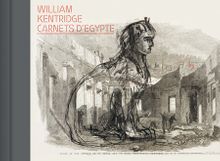 William Kentridge: Carnets D'Egypte
William Kentridge: Carnets D'Egypte
Published by Editions Dilecta/Editions du Musée du Louvre.
Text by William Kentridge. Afterword by Marie-Laure Bernadac.
PUBLISHER
Editions Dilecta/Editions du Musée du Louvre
BOOK FORMAT
Hardcover, 8.75 x 6.25 in. / 80 pgs / 85 color / DVD (PAL Only).
PUBLISHING STATUS
Pub Date 2/28/2011
Out of stock indefinitely
DISTRIBUTION
D.A.P. Exclusive
Catalog: SPRING 2011 p. 83
PRODUCT DETAILS
ISBN 9782916275857 TRADE
List Price: $32.00 CAD $42.50
AVAILABILITY
Not available
STATUS: Out of stock indefinitely. |
 William Kentridge: Trace
William Kentridge: Trace
Prints from The Museum of Modern Art
Published by The Museum of Modern Art, New York.
Text by Judith B. Hecker, William Kentridge.
PUBLISHER
The Museum of Modern Art, New York
BOOK FORMAT
Hardcover, 8 x 10 in. / 112 pgs / 100 color.
PUBLISHING STATUS
Pub Date 4/30/2010
Out of stock indefinitely
DISTRIBUTION
D.A.P. Exclusive
Catalog: SPRING 2010 p. 83
PRODUCT DETAILS
ISBN 9780870707797 TRADE
List Price: $29.95 CAD $35.00
AVAILABILITY
Not available
STATUS: Out of stock indefinitely. |
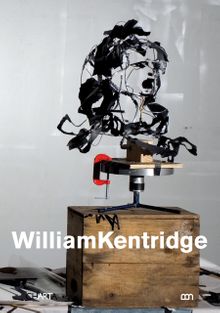 William Kentridge: Repeat-from the Beginning
William Kentridge: Repeat-from the Beginning
Published by Charta/Fondazione Bevilacqua La Masa.
Text by William Kentridge, Francesca Pasini, Jane Taylor, Angela Vettese.
Since the 1990s, Kentridge has maintained a multimedia practice, producing and often combining drawings, films and theater. Since 1992, he has collaborated with the Handspring Puppet Company. During the late 1970s and 1980s, he produced posters, drawings and theater pieces in opposition to South African apartheid.
PUBLISHER
Charta/Fondazione Bevilacqua La Masa
BOOK FORMAT
Paperback, 6.75 x 9.5 in. / 112 pgs / 115 color / 42 bw.
PUBLISHING STATUS
Pub Date 3/1/2009
No longer our product
DISTRIBUTION
D.A.P. Exclusive
Catalog: SPRING 2009 p. 94
PRODUCT DETAILS
ISBN 9788881587100 TRADE
List Price: $34.95 CAD $40.00
AVAILABILITY
Not available
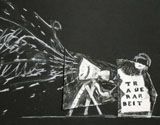 William Kentridge: Black Box/Chambre Noire
William Kentridge: Black Box/Chambre Noire
Published by Guggenheim Museum Publications.
Essays by Maria-Christina Villase“or and William Kentridge.
PUBLISHER
Guggenheim Museum Publications
BOOK FORMAT
Hardcover, 10.75 x 8.5 in. / 128 pgs / 97 color.
PUBLISHING STATUS
Pub Date 1/1/2006
Out of print
DISTRIBUTION
D.A.P. Exclusive
Catalog: SPRING 2006 p. 111
PRODUCT DETAILS
ISBN 9780892073399 TRADE
List Price: $45.00 CAD $55.00
AVAILABILITY
Not available
STATUS: Out of print | 5/18/2011 For assistance locating a copy, please see our list of recommended out of print specialists |
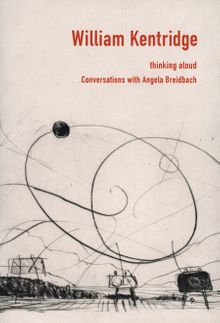 William Kentridge: Thinking Aloud
William Kentridge: Thinking Aloud
Published by Walther König, Köln.
Artwork by William Kentridge. Contributions by Angela Breidbach.
PUBLISHER
Walther König, Köln
BOOK FORMAT
Paperback, 6 x 9 in. / 128 pgs / 3 color / 81 bw.
PUBLISHING STATUS
Pub Date 3/15/2005
Out of print
DISTRIBUTION
D.A.P. Exclusive
Catalog: SPRING 2005 p. 134
PRODUCT DETAILS
ISBN 9783883759081 SDNR30
List Price: $45.00 CAD $55.00
AVAILABILITY
Not available
STATUS: Out of print | 4/1/2008 For assistance locating a copy, please see our list of recommended out of print specialists |
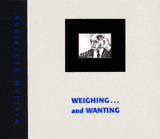 William Kentridge: Weighing...And Wanting
William Kentridge: Weighing...And Wanting
Published by Museum of Contemporary Art, San Diego.
Essay by Leah Ollman. Introduction by Hugh M. Davies.
PUBLISHER
BOOK FORMAT
Hardcover, 11.25 x 9.75 in. / 44 pgs / 23 color / 1 bw / 85 color film stills.
PUBLISHING STATUS
Pub Date 7/2/2001
Out of print
DISTRIBUTION
D.A.P. Exclusive
Catalog: FALL 2001
PRODUCT DETAILS
ISBN 9780934418584 TRADE
List Price: $25.00 CAD $30.00
AVAILABILITY
Not available
STATUS: Out of print | 11/28/2010 For assistance locating a copy, please see our list of recommended out of print specialists |
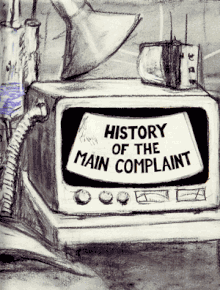 William Kentridge
William Kentridge
Published by Societe des Expositions du Palais des Beaux-Arts de Bruxelles.
Artwork by William Kentridge. Text by Carolyn Christov-Bakargiev.
PUBLISHER
Societe des Expositions du Palais des Beaux-Arts de Bruxelles
BOOK FORMAT
Paperback, 9 x 11.75 in. / 192 pgs / 85 color / 160 bw
PUBLISHING STATUS
Pub Date 4/2/1999
Out of print
DISTRIBUTION
D.A.P. Exclusive
Catalog: SPRING 1999
PRODUCT DETAILS
ISBN 9789074816090 TRADE
List Price: $39.00 CAD $45.00
AVAILABILITY
Not available
STATUS: Out of print | 6/1/2005 For assistance locating a copy, please see our list of recommended out of print specialists |
